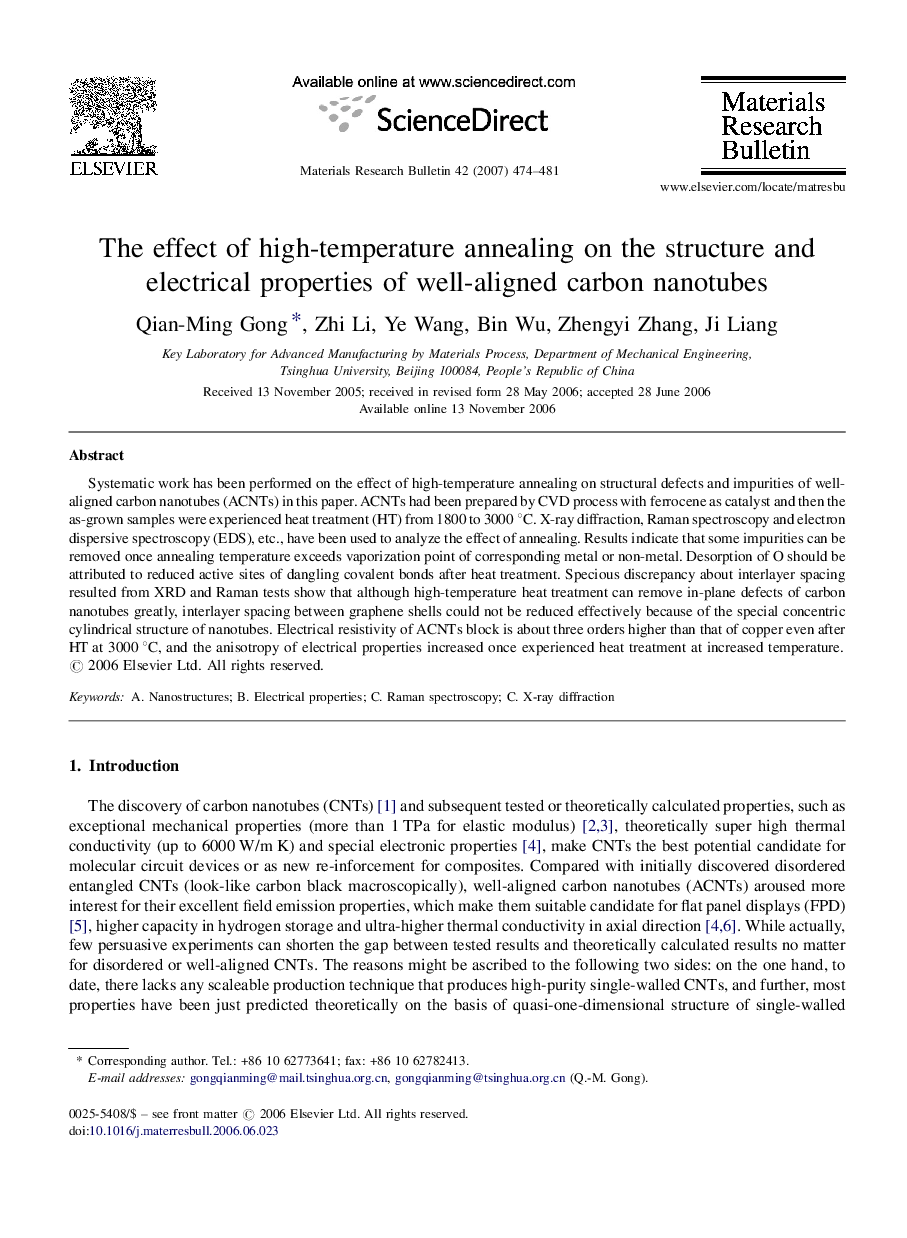| Article ID | Journal | Published Year | Pages | File Type |
|---|---|---|---|---|
| 1491688 | Materials Research Bulletin | 2007 | 8 Pages |
Systematic work has been performed on the effect of high-temperature annealing on structural defects and impurities of well-aligned carbon nanotubes (ACNTs) in this paper. ACNTs had been prepared by CVD process with ferrocene as catalyst and then the as-grown samples were experienced heat treatment (HT) from 1800 to 3000 °C. X-ray diffraction, Raman spectroscopy and electron dispersive spectroscopy (EDS), etc., have been used to analyze the effect of annealing. Results indicate that some impurities can be removed once annealing temperature exceeds vaporization point of corresponding metal or non-metal. Desorption of O should be attributed to reduced active sites of dangling covalent bonds after heat treatment. Specious discrepancy about interlayer spacing resulted from XRD and Raman tests show that although high-temperature heat treatment can remove in-plane defects of carbon nanotubes greatly, interlayer spacing between graphene shells could not be reduced effectively because of the special concentric cylindrical structure of nanotubes. Electrical resistivity of ACNTs block is about three orders higher than that of copper even after HT at 3000 °C, and the anisotropy of electrical properties increased once experienced heat treatment at increased temperature.
